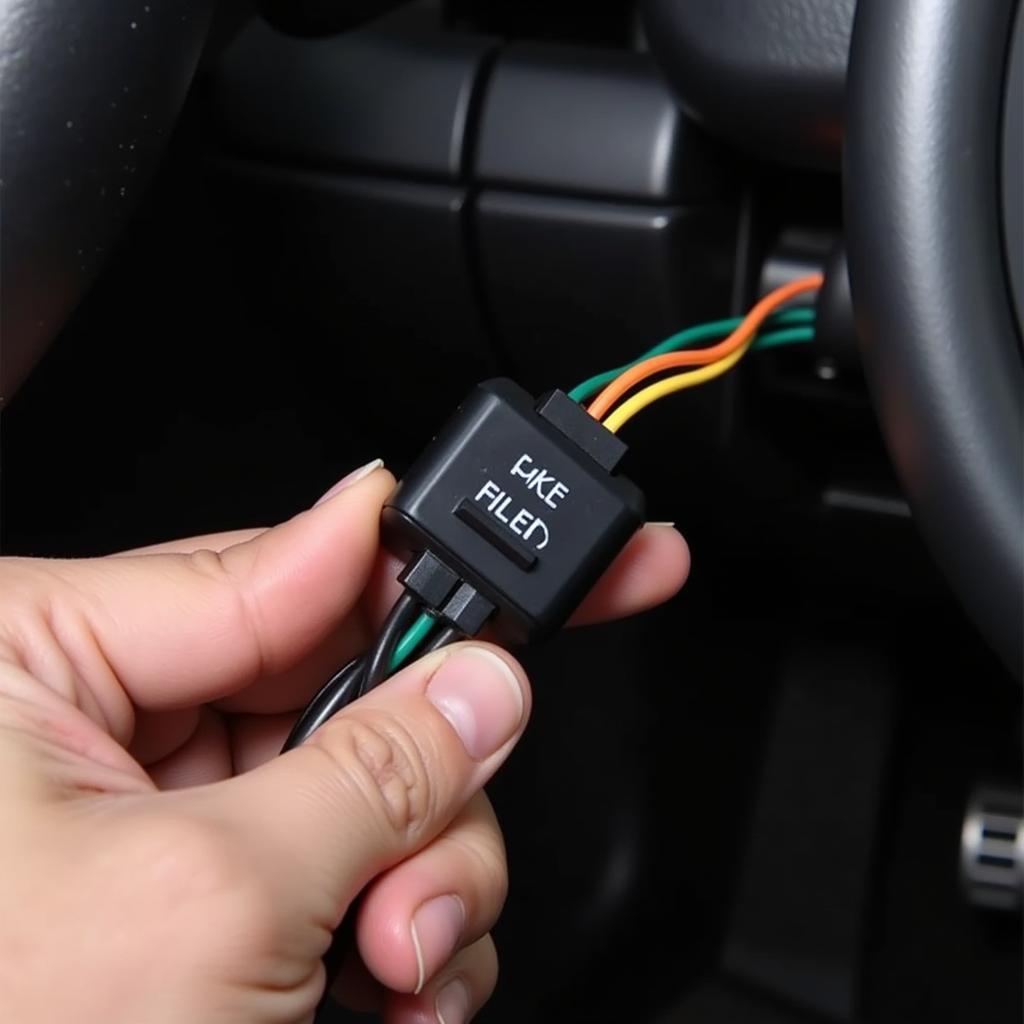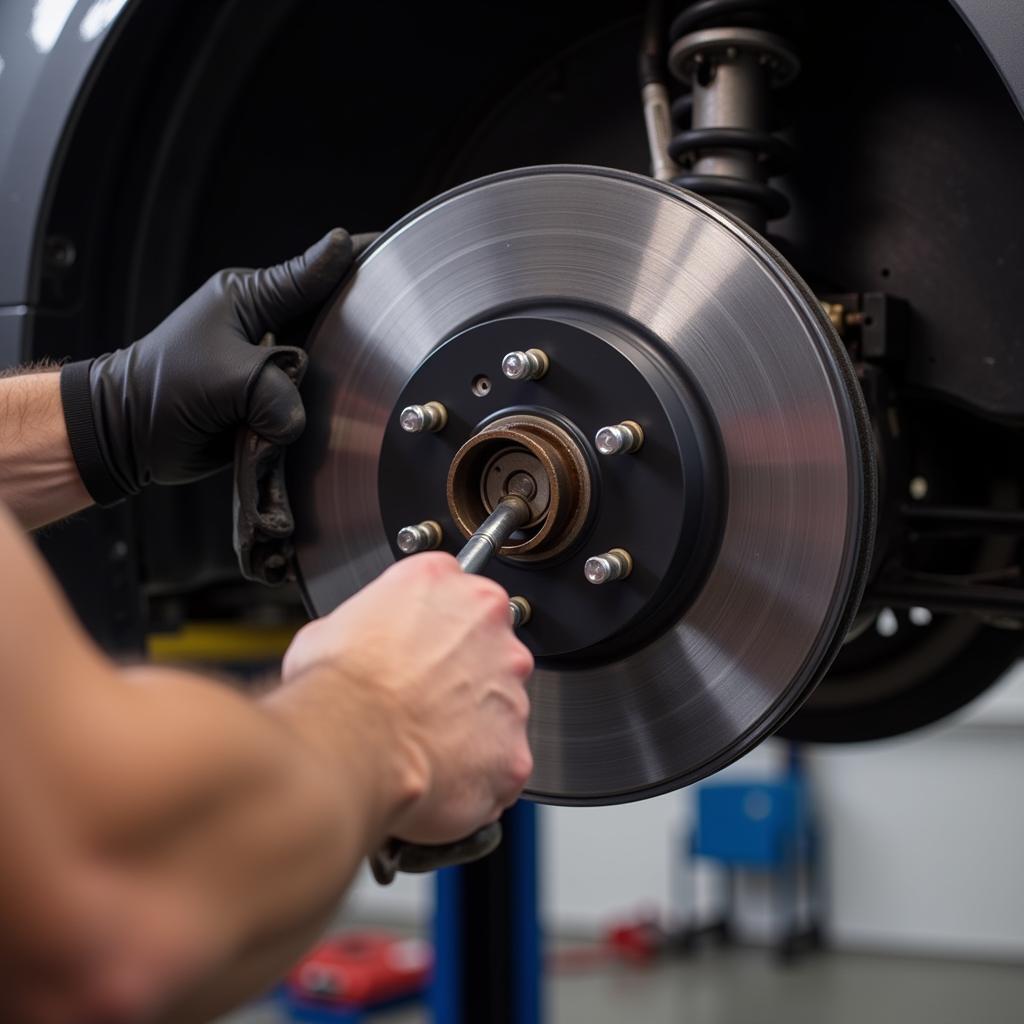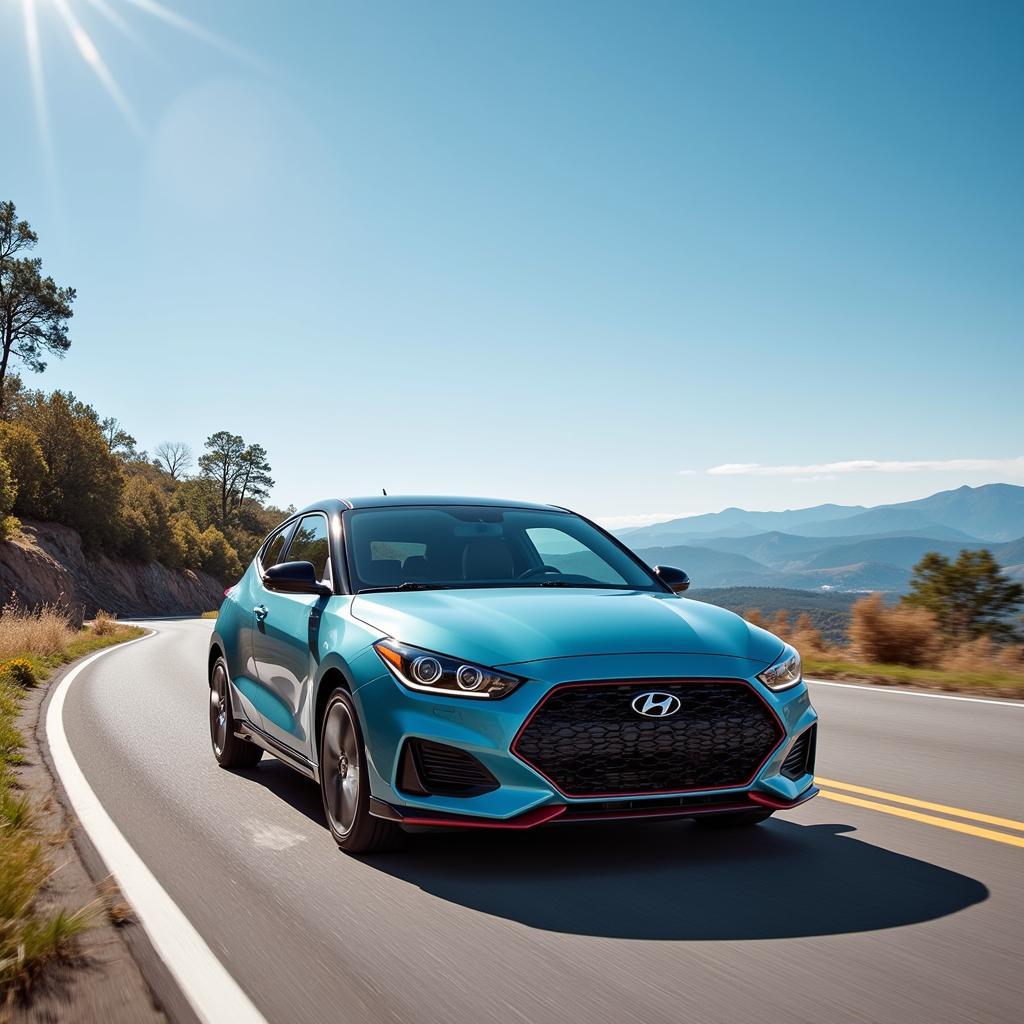Imagine this: you’re cruising down the road in your sleek Hyundai Veloster, the wind in your hair, when suddenly, a menacing light flashes on your dashboard—the dreaded brake warning light. Your heart skips a beat. What does it mean? Is it a minor hiccup or a major malfunction?
Don’t panic! This guide is here to demystify the Hyundai Veloster brake warning light, walking you through the common causes and providing you with the solutions to get you back on the road safely.
Understanding Your Hyundai Veloster’s Brake System
Before delving into the causes of a glowing brake warning light, it’s crucial to understand the basics of your Veloster’s braking system. Your car utilizes a sophisticated system comprising two main components:
-
Hydraulic System: This system uses brake fluid to transmit force from the brake pedal to the brake calipers, effectively clamping the brake pads against the rotors to slow down or stop your vehicle.
-
Electronic System: Modern cars like your Veloster are equipped with electronic systems such as the Anti-lock Braking System (ABS) and Electronic Stability Control (ESC) to optimize braking performance and enhance safety.
Why is My Hyundai Veloster Brake Warning Light On?
Now, let’s get down to the heart of the matter: why is that pesky brake warning light staring back at you? Here are some common culprits:
1. Low Brake Fluid Level
The most common reason for the brake warning light to illuminate is low brake fluid. Brake fluid is the lifeblood of your car’s braking system, responsible for transmitting the force that stops your car. If the fluid level drops too low, it could be a sign of a leak in the system or worn-down brake pads.
Solution: Check your brake fluid level. If it’s low, top it up with the correct brake fluid type specified in your owner’s manual. However, if the fluid level drops again quickly, it’s crucial to have your braking system inspected by a qualified mechanic.
2. Worn Brake Pads
Your Hyundai Veloster’s brake pads are designed to wear down over time. When they reach a certain thickness, a sensor embedded in the brake pad will trigger the warning light on your dashboard.
Solution: Have your brake pads inspected by a mechanic. If they’re worn down, they’ll need to be replaced.
3. Faulty Brake Light Switch
The brake light switch is a small but vital component that activates your brake lights when you press the brake pedal. If this switch malfunctions, it can trigger the brake warning light, often accompanied by brake lights that stay on constantly.
Solution: A faulty brake light switch usually requires replacement. This is a relatively simple fix for a mechanic.
 Hyundai Veloster Brake Light Switch
Hyundai Veloster Brake Light Switch
4. ABS or ESC Issue
Modern vehicles like your Hyundai Veloster rely heavily on electronic systems like ABS and ESC for optimal braking performance. If there’s a malfunction in these systems, the brake warning light might illuminate alongside the ABS or ESC warning light.
Solution: Diagnosing issues with ABS or ESC requires specialized equipment. It’s best to have your car checked by a qualified mechanic or a Hyundai dealership.
5. Faulty Brake Caliper
While less common, a sticking or seized brake caliper can also trigger the brake warning light. A seized caliper can cause the brake pads to drag against the rotor continuously, leading to premature wear, overheating, and reduced braking performance.
Solution: A sticking or seized brake caliper often requires replacement or rebuilding by a skilled mechanic.
 Hyundai Veloster Brake Caliper
Hyundai Veloster Brake Caliper
Ignoring the Brake Warning Light: A Recipe for Disaster
Ignoring a glowing brake warning light is akin to playing Russian Roulette with your safety and that of others on the road. Neglecting brake issues can lead to:
- Reduced braking efficiency: This can increase stopping distances and increase the risk of accidents.
- Complete brake failure: In extreme cases, ignoring brake problems can lead to total brake failure, putting you in a highly dangerous situation.
- Expensive repairs: Addressing brake issues early can save you significant costs in the long run.
Preventive Maintenance: Keeping Your Brakes in Tip-Top Shape
Prevention is always better than cure, especially when it comes to your car’s brakes. Here are some preventive maintenance tips to keep your braking system in optimal condition:
- Regular Brake Inspections: Have your brakes inspected by a qualified mechanic at least once a year or every 12,000 miles.
- Brake Fluid Flush: It’s recommended to flush and replace your brake fluid every 2-3 years or as recommended in your owner’s manual.
- Pay Attention to Sounds: Unusual noises like squealing, grinding, or scraping while braking are often telltale signs of brake problems.
Conclusion
The brake warning light on your Hyundai Veloster is not a signal to panic but a call to action. By understanding the common causes and taking prompt action, you can ensure your safety and keep your Veloster running smoothly for years to come. Remember, a well-maintained car is a safe car.
 Hyundai Veloster Safe Driving
Hyundai Veloster Safe Driving
Frequently Asked Questions
1. Can I drive my Hyundai Veloster with the brake warning light on?
It’s highly discouraged to drive with the brake warning light illuminated. It signifies a potential problem with your braking system that could compromise your safety.
2. How much does it cost to fix a brake warning light on a Hyundai Veloster?
The repair cost varies depending on the underlying cause. A simple brake fluid top-up might cost under $50, while a brake pad replacement could range from $200 to $500. More complex issues like ABS module replacement can be significantly more expensive.
3. How often should I replace my Hyundai Veloster’s brake pads?
Brake pad lifespan varies depending on driving style and conditions. However, it’s generally recommended to have them inspected at least once a year and replace them when they reach the minimum thickness specified in your owner’s manual.
4. How can I tell if my Hyundai Veloster needs new brake fluid?
Apart from a low brake fluid level, signs like a spongy brake pedal, unusual noises while braking, and longer stopping distances can indicate the need for a brake fluid flush.
5. Is it safe to add brake fluid myself?
Yes, you can top up your brake fluid level if you’re comfortable doing so. However, ensure you use the correct brake fluid type specified in your owner’s manual and follow the instructions carefully. If you’re unsure, it’s best to consult a mechanic.

